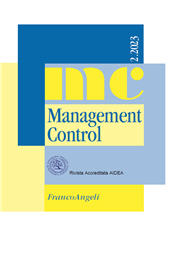Simons levers of control disentangled : a quasi-experiment into the competitiveness of hybrid firms
19-41 p.
Controls are used to ensure "that resources are obtained and used efficiently and effectively to achieve the organization's objective" (Merchant and Otley, 2007, p. 788). Hybrid workplaces, which include flexible work arrangements like working from home, working outside of regular business hours, having flexible work hours, etc. (Stirpe and Zarraga-Oberty, 2017), are characterized by spatial and/or tem-poral separation. This presents control challenges because controlling requires that employee behaviour be in line with the company's goals (Snell 1992). Strict con-trols signal a compromise on trust (Christ et al., 2008), and loose controls dilute subordinates getting strong and clear directives (Long, 2010). Through a quasi-experiment utilizing the theoretical underpinning of Simon's levers of control (1995, 2000), this study explores the types of controls which enable hybrid firm's competitiveness.
According to Widener (2007), the levers both individually and collectively drive firm-level knowledge production and attention direction, and be-cause they interact with one another, their effects are intricately entangled. This entanglement causes tension for organizational actors, who are largely interested in knowing which types of controls are effective in the hybrid firm's context and how these controls relate to each other. The results of the experiment identify that the best possible combination to enable hybrid firm competitiveness is 'High IC and High DC'. The findings establish a significant role of high IC and high DC, in ensuring hybrid firm competitiveness. [Publisher's text].
Forma parte de
Management Control : 2, 2023-
Artículos del mismo número (disponibles individualmente)
-
Información
Código DOI: 10.3280/MACO2023-002002
ISSN: 2239-4397
KEYWORDS
- Simons levers of control (LOC), Competitiveness, Management controls, Quasiexperiment, Hybrid firms


